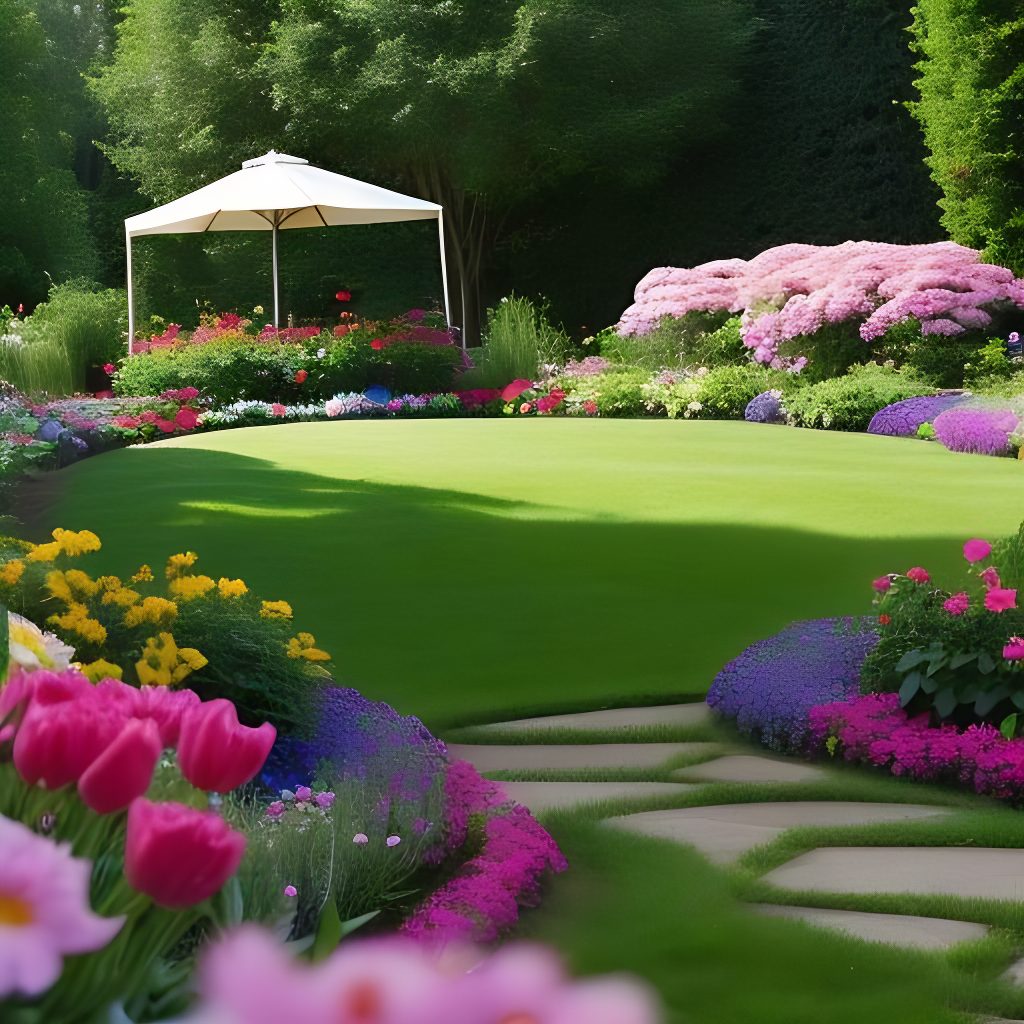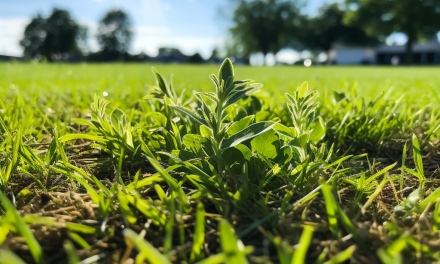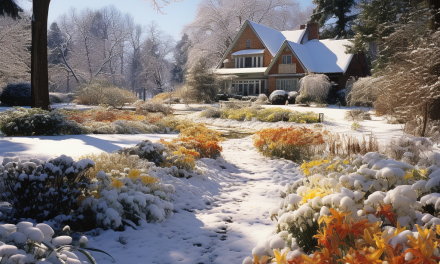Welcome to Gardener Whisperer Tips, where we embark on a journey through the lush world of gardening, inspired by the wisdom of legends like Percy Thrower and Alan Titchmarsh. In this special installment, we’ll be delving into the heart of your garden—the lawn.
Picture your garden as a grand symphony, with every plant and element playing its unique role in creating a harmonious masterpiece. At the center of this symphony stands your lawn, a lush, green stage ready to host nature’s performances. The care and attention you dedicate to your lawn can transform it into a breathtaking piece of art, one that would earn nods of approval from gardening greats like Percy Thrower and Alan Titchmarsh.
Why focus on the lawn, you might wonder? Well, it’s more than just a patch of green; it’s the canvas upon which the rest of your garden unfolds. A beautifully maintained lawn not only provides aesthetic appeal but also serves as the backdrop for your plants and garden features to shine.
As we explore the intricacies of lawn care, you’ll discover that nurturing your lawn is an art and science combined. Whether you’re a seasoned gardener or someone just starting to explore the joys of gardening, this blog post in our “Lawn Care” section is your gateway to timeless gardening wisdom.
So, grab your gardening gloves and let’s embark on a journey to create a lawn that’s not just green but a vibrant canvas for your gardening dreams. It’s time to master the green symphony and unleash the artist within you. Join us as we uncover the secrets of the art of lawn care, and together, let’s transform your garden into a living masterpiece.
The Green Stage: Understanding the Role of Your Lawn
Visualize your garden as a magnificent theater, with your lawn at the center stage where nature’s performances unfold. In this section, we’ll delve into the significance of your lawn and how it plays a crucial role in the overall charm of your garden.
The Lawn as a Canvas
Your lawn is more than just a carpet of grass; it serves as a canvas upon which the story of your garden takes shape. Just as an artist begins with a blank canvas, you have the opportunity to create a masterpiece of greenery. Your lawn acts as the foundation upon which the beauty of your garden is built.
Significance in Garden Design
Garden enthusiasts and design experts have long recognized the importance of a well-maintained lawn. They understand that a thriving lawn isn’t merely about aesthetics; it’s a testament to your gardening prowess. A lush and vibrant lawn serves as the backdrop that allows your garden’s stars—flowers, shrubs, and trees—to shine.

Preparing Your Green Canvas: The Foundation of Lawn Care
Your garden, with its lush lawn, is akin to a masterpiece in the making. To create this work of art, you must first prepare the canvas. In this section, we’ll explore the essential steps to ensure your lawn is ready for its starring role.
Soil Health: The Bedrock of Greenery
Imagine soil as the unseen artist behind the scenes, shaping your lawn’s destiny. Healthy soil is the bedrock of a vibrant lawn. It provides the essential nutrients and structure for your grass to thrive. Here’s how you can nurture it:
Organic Soil Amendments: Consider enriching your soil with organic matter like compost. This natural fertilizer improves soil structure, enriches nutrient content, and encourages beneficial microbial life.
Balancing Nutrients: Properly balanced soil nutrients are essential for robust grass growth. Conduct a soil test to understand its pH and nutrient levels, allowing you to tailor your lawn care regimen accordingly.
Lawn Types: Choosing the Right Ensemble
Not all grasses are created equal, and your choice of lawn type should align with your climate and preferences. Here are some considerations:
Cool-Season vs. Warm-Season Grasses: Determine whether your region is better suited for cool-season or warm-season grasses. Cool-season grasses thrive in cooler climates, while warm-season varieties perform better in hotter areas.
Blends for Resilience: Consider grass seed blends that combine various grass types for added resilience and visual appeal. Blends can withstand diverse weather conditions and provide a lush appearance.
Proper Planning: The Blueprint for Success
Planning your lawn layout is akin to creating the blueprint for a grand architectural masterpiece. Here’s what you should keep in mind:
Sunlight Exposure: Assess the sunlight patterns in your garden to ensure that you select the right grass types for each area. Some grasses require full sun, while others can tolerate shade.
Traffic Patterns: Analyze the traffic flow in your garden. Designate high-traffic areas for more robust grass varieties and plan pathways to minimize wear and tear on the lawn.
Watering Zones: Consider the placement of watering zones and ensure efficient water distribution to all parts of your lawn.
As you prepare the foundation of your lawn, remember that this step sets the stage for the vibrant greenery that will follow. In the upcoming sections, we’ll explore the art of mowing, feeding your lawn, and nurturing it through various seasons. Together, we’ll craft a symphony of green that harmonizes with the beauty of your garden.
Feeding Your Green Ensemble: The Art of Lawn Fertilization
Just as a symphony needs nourishment to produce beautiful music, your lawn requires proper feeding to thrive. Lawn fertilization is a fundamental element of lawn care, and in this section, we’ll explore how to provide your grass with the nutrients it needs to flourish.
Organic Fertilizers: Nature’s Elixir for a Lush Lawn
In our pursuit of a healthy, green lawn, we turn to organic fertilizers—a natural elixir for your grass. Here’s why organic fertilizers should be part of your lawn care repertoire:
Sustainable Nutrients: Organic fertilizers release nutrients slowly over time, providing a steady supply of nourishment for your lawn without the risk of over-fertilization.
Soil Health: These fertilizers improve soil structure and enhance microbial activity, creating an environment conducive to strong root growth and nutrient absorption.
Reduced Environmental Impact: Organic fertilizers are environmentally friendly and reduce the risk of nutrient runoff into water bodies.
Balancing Nutrients: The Nutritional Score for Your Lawn
Imagine the nutrients in your soil as musical notes, and your lawn as the orchestra playing the symphony. To create a harmonious melody, you need to ensure that your grass receives a balanced diet of essential nutrients:
Nitrogen (N): Essential for leafy growth and that lush green color we all desire.
Phosphorus (P): Vital for root development and overall plant health.
Potassium (K): Aids in disease resistance and stress tolerance.
By conducting a soil test, you can identify your lawn’s specific nutrient needs and adjust your fertilization plan accordingly.
Seasonal Fertilization: Tuning Your Lawn for Every Act
Much like a composer adapts the music to suit different parts of a performance, your lawn requires varying levels of nutrients throughout the year. Here’s a seasonal breakdown:
Spring: As the growing season begins, a balanced fertilizer with slightly higher nitrogen content can stimulate lush green growth.
Summer: Shift your focus to a slow-release fertilizer to sustain the lawn during the heat. Avoid excessive nitrogen to prevent stress.
Fall: A fertilizer with higher phosphorus and potassium levels can strengthen roots and prepare the lawn for winter dormancy.
With a well-timed and appropriately balanced fertilization schedule, your lawn will thrive and become a true star in your garden’s performance. In the upcoming sections, we’ll explore the art of watering your lawn wisely, nurturing it through changing seasons, and creating a masterpiece that’s as resilient as it is beautiful.
The Art of Mowing: Creating a Harmonious Grass Ensemble
Now that we’ve prepared the canvas, it’s time to bring our green masterpiece to life. Mowing is an art in itself, and mastering it is key to maintaining a healthy and aesthetically pleasing lawn.
Mowing Techniques: The Brushstrokes of Lawn Care
Consider your lawnmower as your paintbrush and the grass as your canvas. Proper mowing techniques are the brushstrokes that define your lawn’s appearance. Here’s what you need to know:
Mowing Height: Adjust your mower’s cutting height according to the grass type. A general rule of thumb is to remove no more than one-third of the grass blade’s height at a time. Taller grass shades the soil, helping to retain moisture and resist weeds.
Sharp Blades: Ensure your mower blades are sharp. Dull blades can tear the grass rather than cutting it cleanly, leading to a brownish appearance and making the lawn susceptible to diseases.
Mowing Pattern: Vary your mowing pattern with each session. Changing the direction prevents grass from leaning in one direction and promotes even growth.
Clippings as Mulch: Consider leaving grass clippings on the lawn as a natural mulch. They decompose quickly, returning valuable nutrients to the soil.
Choosing the Right Mower: Tools of the Trade
Selecting the right lawnmower is crucial for maintaining a well-groomed lawn. Here are some common types to consider:
Push Mowers: Ideal for smaller lawns, these mowers are easy to maneuver and operate without gasoline or electricity.
Gas-Powered Mowers: Suitable for larger lawns, gas-powered mowers provide more power and coverage.
Electric Mowers: These come in corded or cordless varieties. Cordless electric mowers offer convenience and eco-friendliness.
Mowing Schedule: Timing is Everything
Timing your mowing sessions can impact the health and appearance of your lawn. Consider the following tips:
Regular Schedule: Establish a consistent mowing schedule. During the growing season, you may need to mow every 7-10 days, depending on grass type and growth rate.
Avoid Mowing When Wet: Mow when the grass is dry to prevent clumping and mower-related accidents.
Adjust for Season: Adjust the frequency and mowing height based on the season. Grass grows more vigorously in the spring and early summer.
With these mowing techniques, you’re well on your way to creating a beautifully manicured lawn that complements your garden’s overall aesthetic. In the upcoming sections, we’ll delve into the crucial aspects of feeding your lawn, proper watering techniques, and managing lawn care through changing seasons.
Watering Wisely: Nourishing Your Lawn
In the grand symphony of lawn care, watering plays a crucial role as the gentle rain that refreshes the performers. Proper watering techniques ensure your lawn remains healthy and vibrant. Let’s explore how to nourish your green ensemble effectively.
Watering Techniques: The Rhythmic Flow of Hydration
Picture watering as a rhythmic dance, with your garden’s greenery as the graceful dancers. These techniques will help you keep your lawn hydrated and thriving:
Deep Watering: Rather than frequent shallow watering, aim for deeper, less frequent sessions. This encourages grass roots to grow deeper, making your lawn more resilient to drought.
Early Morning or Late Evening: Water your lawn early in the morning or late in the evening when temperatures are cooler. This reduces water loss due to evaporation.
Avoid Overwatering: Overwatering can lead to shallow root growth, making your lawn more susceptible to drought and diseases. Use a rain gauge or a moisture meter to gauge when to water.
Drought Resistance: Building Resilience into Your Lawn
To create a resilient, drought-resistant lawn, consider these strategies:
Choose Drought-Tolerant Grass: Opt for grass varieties that are naturally more resistant to drought conditions, especially if you live in areas prone to water shortages.
Aerate the Soil: Lawn aeration improves water penetration and root growth. It also reduces soil compaction, allowing air and water to reach the roots more effectively.
Mulch Garden Beds: Applying mulch to garden beds helps retain moisture, reducing the overall water needs of your garden.
By adopting these watering techniques and drought-resistant strategies, you’ll ensure that your lawn remains well-hydrated, healthy, and capable of enduring dry spells.
Avoid Overwatering: The Pitfall of Excess
In our enthusiasm to keep our lawns lush, we sometimes inadvertently overwater. Excessive watering can lead to problems such as:
Disease: Overly moist conditions can encourage the growth of fungal diseases in your lawn.
Shallow Roots: Grass roots may not grow deep enough if they constantly receive excess moisture near the surface.
Water Waste: Overwatering is wasteful and can result in higher water bills.
Striking the right balance is essential for healthy grass and efficient water use.
As you continue to nurture your lawn with proper watering techniques, you’re on your way to creating a resilient and thriving green masterpiece. In the upcoming sections, we’ll explore how to manage the lawn ecosystem, dealing with pests and weeds naturally, and adding those finishing touches that elevate your lawn’s visual appeal.
Nurturing the Lawn Ecosystem: Dealing with Pests and Weeds
In the intricate symphony of lawn care, pests and weeds can be like discordant notes, disrupting the harmony of your green ensemble. However, with the right strategies, you can maintain a healthy lawn without resorting to harsh chemicals.
Natural Pest Control: Harmonizing with Beneficial Insects
In the world of gardening, balance is key. Just as an orchestra needs various instruments to create a beautiful melody, your lawn benefits from a diverse ecosystem. Encourage the presence of beneficial insects like ladybugs, lacewings, and parasitic wasps. These natural predators can help keep harmful pests in check.
Plant Companion Flowers: Planting companion flowers such as marigolds and lavender can attract beneficial insects, creating a thriving ecosystem in your garden.
Avoid Pesticides: Refrain from using chemical pesticides that can harm both pests and beneficial insects. Instead, opt for natural pest control methods.
Weed Management: Cultivating a Clean Score
Weeds can disrupt the visual harmony of your lawn, but you don’t need harsh herbicides to deal with them. Here’s how to manage weeds naturally:
Manual Removal: Regularly inspect your lawn and manually remove weeds by their roots, especially when they’re young.
Mowing Height: Adjust your mowing height to ensure grass shades out weeds, making it difficult for them to establish.
Mulching: Applying a layer of mulch in garden beds and around the base of trees can prevent weed growth.
Eco-Friendly Weed Killers: Targeted Solutions
For more stubborn weeds, consider natural, targeted weed killers made from ingredients like vinegar, salt, or dish soap. These solutions are effective against weeds while being less harmful to the environment than chemical herbicides.
By nurturing a balanced lawn ecosystem and adopting eco-friendly weed management practices, you can keep your lawn healthy and free from pests and weeds, all while maintaining the natural beauty of your garden.
Nurturing the Lawn Ecosystem: Dealing with Pests and Weeds
In the intricate symphony of lawn care, pests and weeds can be like discordant notes, disrupting the harmony of your green ensemble. However, with the right strategies, you can maintain a healthy lawn without resorting to harsh chemicals.
Natural Pest Control: Harmonizing with Beneficial Insects
In the world of gardening, balance is key. Just as an orchestra needs various instruments to create a beautiful melody, your lawn benefits from a diverse ecosystem. Encourage the presence of beneficial insects like ladybugs, lacewings, and parasitic wasps. These natural predators can help keep harmful pests in check.
Plant Companion Flowers: Planting companion flowers such as marigolds and lavender can attract beneficial insects, creating a thriving ecosystem in your garden.
Avoid Pesticides: Refrain from using chemical pesticides that can harm both pests and beneficial insects. Instead, opt for natural pest control methods.
Weed Management: Cultivating a Clean Score
Weeds can disrupt the visual harmony of your lawn, but you don’t need harsh herbicides to deal with them. Here’s how to manage weeds naturally:
Manual Removal: Regularly inspect your lawn and manually remove weeds by their roots, especially when they’re young.
Mowing Height: Adjust your mowing height to ensure grass shades out weeds, making it difficult for them to establish.
Mulching: Applying a layer of mulch in garden beds and around the base of trees can prevent weed growth.
Eco-Friendly Weed Killers: Targeted Solutions
For more stubborn weeds, consider natural, targeted weed killers made from ingredients like vinegar, salt, or dish soap. These solutions are effective against weeds while being less harmful to the environment than chemical herbicides.
By nurturing a balanced lawn ecosystem and adopting eco-friendly weed management practices, you can keep your lawn healthy and free from pests and weeds, all while maintaining the natural beauty of your garden.
Finishing Touches: Lawn Aesthetics
Your lawn is like a magnificent stage awaiting the final act—the embellishments that elevate its visual appeal. In this section, we’ll explore techniques for creating defined edges and borders, as well as adding eye-catching accessories to make your lawn a true masterpiece.
Edging and Borders: Framing Your Green Canvas
Creating defined edges and borders around your lawn can transform it from a simple grassy area into an organized and visually appealing landscape. Here’s how:
Edge with Precision: Use a lawn edger or a spade to create clean, defined edges along walkways, flower beds, and other garden features. This separates your lawn from other elements and provides a tidy appearance.
Install Garden Borders: Consider using materials like bricks, stones, or decorative edging to create physical borders. These not only define your lawn’s boundaries but also add a touch of elegance to your garden.
Lawn Accessories: Adding Personality
Enhance your lawn’s charm by incorporating accessories that reflect your personality and style. Here are some ideas:
Garden Decor: Decorative elements like garden statues, gazing balls, or birdbaths can add a touch of whimsy or sophistication to your lawn.
Outdoor Furniture: Consider placing a cozy bench or a stylish set of chairs and a table on your lawn. It creates a welcoming space for relaxation and enjoyment.
Water Features: A small pond, fountain, or waterfall can bring tranquility and a sense of natural beauty to your lawn.
Lighting: Outdoor lighting, such as string lights or solar-powered lanterns, can illuminate your lawn in the evening, extending your enjoyment into the night.
Pathways: Create meandering pathways with stepping stones or gravel to add character and functionality to your lawn.
By adding these finishing touches, you not only enhance the visual appeal of your lawn but also create an inviting outdoor space where you can relax and appreciate the beauty of your garden.
In Conclusion, as you’ve journeyed through the various aspects of lawn care in this blog post, from preparing the canvas to nurturing your lawn’s ecosystem and adding those final touches, you’ve embarked on a quest to master the art of lawn care. Your garden, with its lush green stage, is now ready to shine as a masterpiece in your gardening portfolio.
By applying the wisdom of the gardening greats and incorporating eco-friendly practices, you’ve transformed your lawn into a sustainable oasis that not only impresses but also contributes to the health of our planet.
Thank you for joining us in this green adventure, and may your lawn continue to flourish as a testament to your dedication to the art of lawn care.
Amazon and the Amazon logo are trademarks of Amazon.com, Inc, or its affiliates.AMAZON AFFILIATE DISCLOSURE The Garden Whisperer Tips blog is a participant in the Amazon Services LLC Associates Program, an affiliate advertising program designed to provide a means for sites to earn advertising fees by advertising and linking to Amazon.com. As an Amazon Associate, we earn from qualifying purchases. Some of the links on this blog are affiliate links, and if you go through them to make a purchase, we will earn a commission at no extra cost to you. AFFILIATE MARKETING AND ADVERTISEMENT TRANSPARENCY At Garden Whisperer Tips, we believe in full transparency with our readers. We participate in multiple affiliate marketing programs, and some of the links on this blog may be affiliate links. This means we may earn a commission if you click on the link or make a purchase using the link. We also host advertisements on our blog, which helps us generate revenue. Rest assured, our editorial content is not influenced by advertisers or affiliate partnerships.





